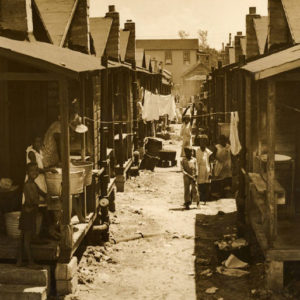
Using a grant from the Andrew W. Mellon Foundation, students in an American history course at the University of Miami created a multimedia exhibit entitled Race, Housing, and Displacement in Miami.
Using StoryMap, a platform that combines maps with narrative text, images, and multimedia content, the students conducted research in the university library’s digitized archives, wrote the history of Miami’s segregation, slum clearance, public housing, and gentrification, and interviewed grassroots activists who today are fighting to build a more inclusive and equitable Miami. Along the way, they documented the historic policies and practices that public officials employed to remove Black residents from their homes and neighborhoods.
In 1939, after many African Americans living near Miami’s central business district were pushed out of “Colored Town” to Liberty Square, the Miami City Commission ordered the construction of a six-foot wall separating the South’s first Black public housing project from nearby White neighborhoods. Though now only a few feet high, a remnant of that wall still runs along the Liberty City housing project, serving as a stark reminder of the strict color lines of the past.”
“It was shocking to go through the history and see how minority communities were railroaded from home ownership, which is typically the basis for wealth in this country,” said junior Alex Hill, a history and political science major who was one of the students who created the project. “We may not be able to right the wrongs, but at least we can illuminate them, so people actually understand where the issues the city is facing come from.”










